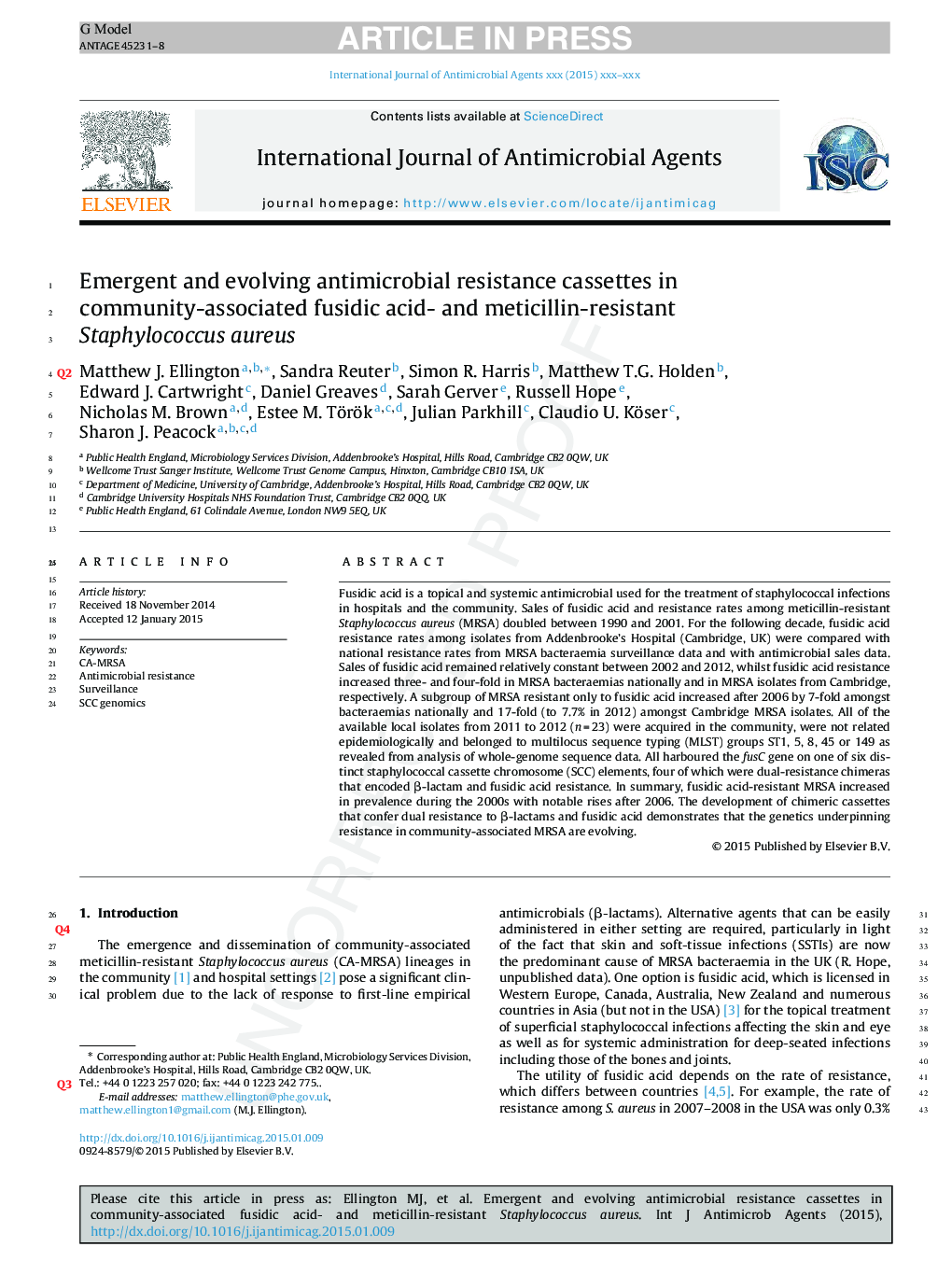| Article ID | Journal | Published Year | Pages | File Type |
|---|---|---|---|---|
| 6117868 | International Journal of Antimicrobial Agents | 2015 | 8 Pages |
Abstract
Fusidic acid is a topical and systemic antimicrobial used for the treatment of staphylococcal infections in hospitals and the community. Sales of fusidic acid and resistance rates among meticillin-resistant Staphylococcus aureus (MRSA) doubled between 1990 and 2001. For the following decade, fusidic acid resistance rates among isolates from Addenbrooke's Hospital (Cambridge, UK) were compared with national resistance rates from MRSA bacteraemia surveillance data and with antimicrobial sales data. Sales of fusidic acid remained relatively constant between 2002 and 2012, whilst fusidic acid resistance increased two- and four-fold in MRSA bacteraemias nationally and in MRSA isolates from Cambridge, respectively. A subgroup of MRSA resistant only to fusidic acid increased after 2006 by 5-fold amongst bacteraemias nationally and 17-fold (to 7.7% in 2012) amongst Cambridge MRSA isolates. All of the available local isolates from 2011 to 2012 (n = 23) were acquired in the community, were not related epidemiologically and belonged to multilocus sequence typing (MLST) groups ST1, 5, 8, 45 or 149 as revealed from analysis of whole-genome sequence data. All harboured the fusC gene on one of six distinct staphylococcal cassette chromosome (SCC) elements, four of which were dual-resistance chimeras that encoded β-lactam and fusidic acid resistance. In summary, fusidic acid-resistant MRSA increased in prevalence during the 2000s with notable rises after 2006. The development of chimeric cassettes that confer dual resistance to β-lactams and fusidic acid demonstrates that the genetics underpinning resistance in community-associated MRSA are evolving.
Related Topics
Life Sciences
Immunology and Microbiology
Applied Microbiology and Biotechnology
Authors
Matthew J. Ellington, Sandra Reuter, Simon R. Harris, Matthew T.G. Holden, Edward J. Cartwright, Daniel Greaves, Sarah M. Gerver, Russell Hope, Nicholas M. Brown, M. Estee Török, Julian Parkhill, Claudio U. Köser, Sharon J. Peacock,
